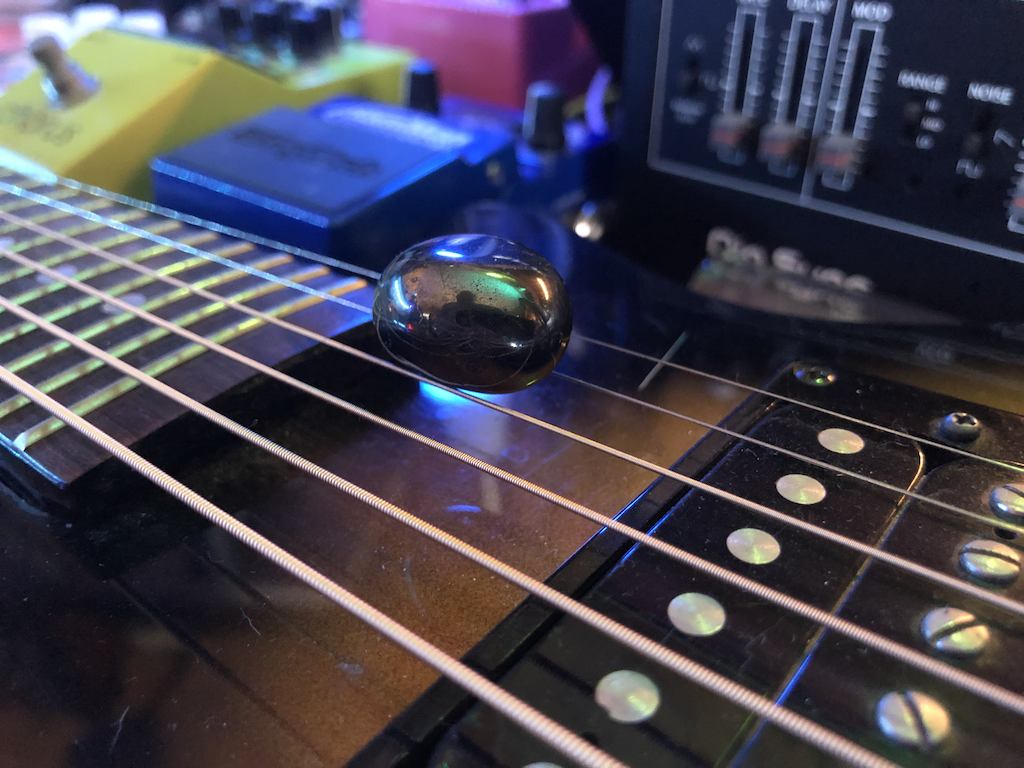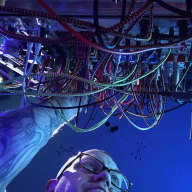Meta Workshop Jam
Table of Contents

Walking late one afternoon after a day deep in Cognitive Systems and Resilience Engineering workshops, chatting with one of the eminent researchers in the field, the conversation circled around common ground in joint activity and sociotechnical systems sharing qualities with music ensembles. I remember agreeing how some uncategorizable thing exists on both sides as an outcome, where a result far greater than merely the sum of its parts occurs.
Music isn’t just the combination of the instruments, it’s the way in which humans push their operation forward through time both creating and adapting to the music and each other simultaneously. I feel like adaptive capacity in a resilient system works much the same way, and this workshop helped confirm my thinking. Here are some reflections about how it forged new connections between my Ops mind and my Musical one (which are not that far apart already).
What is this thing?#
I’ve learned that I have latched onto bits of information when discovering. Something will catch my eye or ear and make a little meerkat synapse in my brain stand up and look around and go, “hold up, what’s that?” It’s probably the element of my psyche that drives my vinyl record store diving. I am not sure I would have never become the Paul Bowles fanatic I am without first hearing “Tea in the Sahara” by The Police in the ’80s. Never would have come across the thinking of Gilles Deleuze while studying music if I didn’t ask myself “why is this record label called Mille Plateaux?”
A Thousand Plateaus (1980) is a tome Deleuze penned with Félix Guattari that discusses artists, musicians, psychoanalysts, historians and all sorts of other things having to do with asking questions about reality. It’s heady, as metaphysics and social philosophy tend to be, but one takeaway I like is that ‘experience’ necessarily includes the novelty of ideas and actions. That means newness. Discovery! An expansion of knowledge, an unbounded dimension of insight, an openness to adapt, embracing the unknown and the unexpected.
In fact, later that workshop evening, as a bunch of Human Factors geeks had drinks in a hipster place with fake wood stoves, I learned of someone who has done recent research on cognition in jazz improvisation. Wonderfully adjacent to my own interests, and I may have never heard about it under other circumstances. I love these tendrils of discovery, and it’s those veins of potentials that Deleuze is suggesting belong to a Body without Organs.
Real Work#
Regardless of whether Deleuze speaks of art, philosophy, or science, his view emphasizes that we are the most interested in how something works. In fact real work – the things you and I do every day to complete our job titles – cannot be separated from the surprises and adjustments that lie therein. Any number of virtual possibilities potentially describe our engagement with a complex system beyond its components, beyond its recognizable organs and their describable arrangement.
I’m no philosophy student, so an evaluation of metaphysics isn’t my goal here. Nevertheless, when I perceive new angles of thinking about things in different ways, I jump on them as opportunities to discover something about a topic through following a different, sometimes oddball, perspective of that topic. Again, the latch-and-tendril effect. In the spirit of Mille Plateaux, I will proceed dutifully Postmodern and arbitrarily decontextualize a bit I can latch onto!
I have already mentioned the Body without Organs (BwO). It is a strange concept, and not one that I immediately grokked (the wikipedia entry may help). However, on that day of Cognitive Systems workshops, I learned that there was actually an entire discipline built around the indeterminacy that I loved to see in nature and society and the things we build and operate. Suddenly, I knew the BwO better. The uncertainty of the world practically describes it, so I began to wonder how it relates and connects things outside of metaphysics. Like musical improvisation and resilience engineering.
The Non-Thing?#
The BwO is one way to think about the thingness of complex systems beyond their components, where effects and outcomes may be more interesting than systemic organ function. That sounds like the opposite of a thing, but that’s the point; it’s not the thing, but beyond the thing. The thing has limited, if any, control over what its BwO looks like.
For my purposes, it resembles inherent Chaos. For instance, it is not that outside agents cause this of their own unpredictable accord (“our users/jr.engineers give us this already”), but that combinations of all factors create unpredictable outputs at the boundaries of competence. There’s just no way of knowing, but there are potential possibilities.
When the thing is a complex socio-technical system, we already know that diversity and collaboration help understand it well beyond its organs. More expansive than just a “whole that is greater than the sum of its parts”. The result of the complex system is a condition that only exists in real-time, and is ultimately empirical and practical in application; it simply cannot exist contained within a theory or design.
This is “the practice of practice” that guitarist Derek Bailey ascribes to the music in his book Improvisation. It does not exist outside of its practice, it is beyond just musicians and any score. The music itself is not a combination of elements and not more than the sum of its parts, indeed that implies a linear relationship and a known quantity! Instead, it is expansive along the various potential faultlines of novelty and experience set before it.
!Theory#
My mentor and musicology professor in grad school would always pronounce that word like “thhheeeaoryy” and we’d laugh and go about our day putting screws between piano strings. So keep in mind that these examples are not so much about the metaphysical concept of the Body without Organs, but rather how I’ve recognized its qualities in other disciplines, outside of theory.
- The Cognitive Systems workshop introduced me to a wonderful talk by another researcher in Resilience Engineering, Dr. Richard Cook (Adaptive Capacity Labs), titled Bone is Resilience. He shows how adaptive capacity among interoperable body systems continuously regenerate and strengthen bone as the result of a complex system. It involves everything from diet and vitamin intake to blood circulation and bone marrow operation, not to mention each of those systems, in turn, all cooperate with other systems that would seem to have nothing to do with bone growth. These are all quite literal organs. What’s not codified as an organ, or otherwise described as one, is the result of what happens when bones build robustness along lines of stress, heal fractures, or even just grow in a world dominated by gravity. Bone system adaptation along the axis of time is descriptive of a Body without Organs.
- Another example that comes to mind is the notion that work-as-planned is never work-in-practice. Rather than say “all models are false”, maybe it makes more sense that all models aren’t models unless they contain a BwO, or the real work of the system, its potentials. Which of course requires the existence of a ‘non-static model’ to differentiate it from the system-as-designed (i.e. work-as-planned). If the system-as-designed is the organs, elements of putting these organ-ic systems into practice comprise the non-static model, which includes its Body without Organs.
- A crucial lesson from the workshop is the idea that what we’re studying when we analyze why a complex system fails is the same domain as what happens when it succeeds. Bob Edwards (Human & Organizational Performance Coach) taught and talked about this, putting it beautifully: “To understand failure, study success. The same things that are there when failure happens are the same things that are there when success happens.” Including all potentials on the same stratum, success or failure, is descriptive of a Body without Organs.
- Finally, improvisational music is squarely in this realm. The obvious answer is, well of course it is! Mental models and Bailey’s “practice of practice” are quintessentially BwO domains. They are defined by the novelty of their creation in each individual, and when combined with other individuals create a much greater understanding of the whole. The ongoing collaborative understanding of a complex system as it changes and adapts is descriptive of a Body without Organs.
Practical Postulating Virtual Potentials#
What I’ve been describing in these examples that include virtual potentials (i.e. indeterminacy or unknown unknowns) is described by Deleuze as a ‘Healthy BwO’. They are non-static planes of existence, fluid and open to reframing and adaptation. Not necessarily bad, not necessarily good. Just all bits of the same virtual potential, creating new knowledge.
The goals behind adaptive approaches to managing complexity consider this. A central workshop motif was our everchanging, adaptive world. My interests over the years have resonated with this, I am fascinated with discovery and change, and realize a lot of my art – visual and sonic – reflects that.
My current work interests follow the same themes, most certainly Chaos Engineering. Its goal is not to cause damage or create chaos, but to employ careful experimentation to examine what Dr. David Woods calls the system’s graceful extensibility, and how it is exposed during the loss of integrity at an operational boundary. These distributed systems we build quickly corporate a Body without Organs almost merely by their variable nature alone, any observation is one in the past, we cannot know the state of the system. As they begin operating at boundaries of competence, they encounter novel modes of potential, whether it be an outage or a surprise efficiency. Chaos Engineering experimentation really becomes a window into the BwO, not an element of it.
The Equality of Immanence#
When you think that this thing has both good and bad stuff in it, and they’re both as variable as the other, it comes pretty close to another feature of Deleuze called the ‘Plane of Immanence’. That sounds lofty, but it’s the opposite. It simply means one thing: life, death, consciousness, spirituality, all of it is equal in the same metaphysical flux. None of it ‘transcends’ any other bit of it. This struck me as similar to the ‘new view’ of safety espoused by Sydney Dekker, where there is no such thing as a transcending root cause explanation like human error. The alternative is what Deleuze might call a ‘Cancerous BwO’: petrified regeneration of static patterns, recursive and stuck in linearity. I would certainly say the ‘5 Whys’ and ‘Root Cause Analysis’ are elements of a pathologically cancerous Body without Organs.
The Healthy BwO concept, even as an allegory, makes sense in our adaptive world. The way to survive an environment that is constantly changing isn’t to create barriers and simplifications, but to embrace its Immanence and maneuver complexity with diverse perspectives instead of fighting it, because virtual potentials will happen whether we like them or not.
The most memorable lesson I got from the workshop is that there is a simple answer to complexity: Let it happen.

